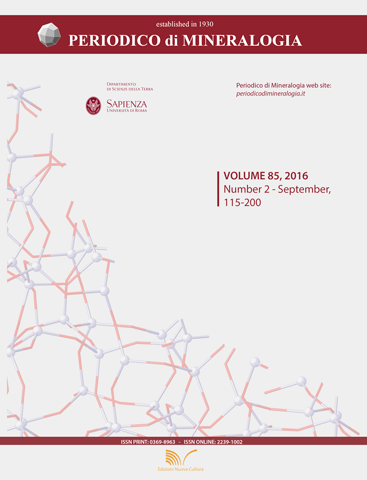Post-collisional Plio-Pleistocene Anar - Dehaj adakitic subvolcanic domes in the central volcanic belt of Iran: geochemical characteristics and tectonic implications
DOI:
https://doi.org/10.2451/2016PM610Keywords:
Adakite, Subduction zone, Post-collision, Urumieh–Dokhtar magmatic assemblage, Dehaj-Sarduieh belt, Iran.Abstract
In the area between Anar and Dehaj, located in the Urumieh–Dokhtar magmatic assemblage (UDMA), there are some Plio-Pleistocenic subvolcanic porphyritic andesitic-dacitic domes. The subvolcanic domes, as a part of Dehaj-Sarduieh belt in Kerman province, show tafoni erosion and magma mingling evidences. Petrographically, the domes are andesite and trachyandesite in composition and are characterized by microlitic-porphyritic, glomeroporphyritic, trachytic and aphanitic textures. Mineralogically, the domes consist of plagioclase, amphibole, clinopyroxene and opaque minerals. Geochemical studies reveal that Anar-Dehaj subvolcanic domes can be divided two groups, named group 1 and group 2, on the basis of the silica content. Group 1 shows high-K calc- alkaline andesite- trachyandesite composition; whereas group 2 is medium-K calc-alkaline dacite. The absence of a distinct Eu anomaly in all samples suggests contemporaneous crystallization of plagioclase and amphibole, and/or oxidation state of magma. Trace element discrimination diagrams along with chondrite-normalized rare earth element patterns show that the Anar- Dehaj subvolcanic rocks formed in a subduction related environment. Moreover, high Sr/Y and La/Yb ratios along with low Y and HREE contents are consistent with adakitic natures. It is suggested that the Anar- Dehaj subvolcanic domes formed in a post-collisional setting due to slab melting or underplating of basaltic magmas under thick Plio-Pleistocine continental crust.
Downloads
Published
Issue
Section
License
Copyright (c) 2016 PERIODICO di MINERALOGIA

This work is licensed under a Creative Commons Attribution 4.0 International License.


